From Bukit Brown’s Poet- in- Residence – a poem inspired by a little sparrow “captured” by Bukit Brown’s Photographer- in- Residence. Be inspired and be of good hope.
LITTLE SPARROW ON THE TREE
by Lim Su Min
What seeeth thou from up there,
Little sparrow on the tree
With thine tiny eyes thy vision cast
Across this cemetery?
Canst thou see the things unseen
Thousands upon thousands of souls in pain
Canst thou hear with thine tiny ears
Their plaintive cry for “peace again?
Little sparrow on the tree
Soar up to heaven to pray
To plead that these anguished souls
Would truely “Requiescite in pace” .
Theatre practitioner, Alvin Tan visits Bukit Brown for the first time and shares his impressions and reflections on where he sees its place in the Singapore story – past, present and future
It began with a text message:
Jasmine alerts me to a Bukit Brown walk (Saturday 14 April 2012) on SMS:
Hi all,
Any one up for a stroll through Bukit Brown this Saturday morning 14th APRIL from 9am to 11-ish? The good volunteer peeps of the Heritage Singapore Bukit Brown facebook group have agreed to take us on a walking tour led by the tomb whisperer himself – the brilliant Raymond Goh. Pls sms me if you’re inTERESTED. Pls ask along friends family other filmmakers. Children and infants in baby carriers are always welcome! <<jasmine
I responded that I was interested but unable to confirm because it was a very busy week and I might be too exhausted. I’m not much of a morning person. I stalled. Jasmine persisted. And on Saturday morning, I was on the MRT meeting Jasmine at Tiong Bahru Station, jumping into a cab and we were on our way to Bukit Brown.
I was relieved that I reached Bukit Brown with such ease. Getting off the cab, friends from the theatre and film communities were already there. And soon we were to be inducted into the Bukit Brown community as we waited for for Raymond to arrive.
The tranquil environment was soothing; ordinary and extraordinary at the same time. Why is the dead impacting on us so much with this Bukit Brown saga? Why is heritage beginning to matter to us? Have we been losing too much of that in recent years and more Singaporeans are feeling the loss?
It’s happening at a point in Singapore’s history, after GE 2011, after the KTM/Green Corridor episode. It’s been bringing Singaporeans from all walks of life together – advocates, interest groups, NGOs and the public. I’ve never witness a cause being mainstreamed so fast here in Singapore that it is beginning to take on a momentum of a small movement.
Petitions have been started, position papers on both the heritage and habitat of Bukit Brown have been written, outreach activities to create awareness and appreciation of Bukit Brown to draw the Singaporeans and visitors from all walks of life, took flight. Whether it shows a sign of maturity, that Singaporeans are beginning to be stakeholders as citizens of this country is not as important to me as the fact that it’s the only kind of Awakening Singaporeans can afford. There is not just a small group of people, a core of activists who can be easily contained, labelled, character assassinated and dismissed.
The realisation that organic change is the best revolution for me accompanied me throughout the morning at Bukit Brown as I took in the stories shared so generously by the tomb whisperer, Raymond Goh. Just looking at all of us being attentive and learning about our history, cultural heritage made me appreciate the moment we were all in as we moved from one tombstone to the next.
Then the Peranakan tombs came into focus. It was not just the Chinese that were buried at Bukit Brown. There were so many Peranakans buried here as well. The tiles that lined some of the tombs made me wonder again how the Peranakans were determined to distinguish themselves from the other Chinese (sinkehs) who came later. The fact that the Peranakans integrated and assimilated successfully in Nanyang again arose in my mind, juxtaposed to our contemporary reality of new migrants arriving at our shores today. What would that outcome be like compared to the Peranakan story of our past? How rich these lessons are or can be and how did this visit to Bukit Brown inspire such multi-layered discourse in my mind? What can happen if history teachers, dramatists and other artists have site-specific happenings, engaging the public. Surely this would be something concrete that the Community Engagement Programme would gladly commission to build social cohesion meaningfully amongst Singaporeans.
Then of course a friend’s question bothered me: ” Why only now? Before the whole ruckus, who bothered about Bukit Brown? So why bother about it now? It can go, it wouldn’t bother me. It didn’t bother me before, and so, it shouldn’t bother me now. It’s a loss I can afford. “
Or can we? As we walked the trail, with nature all around us, I easily fell into deep reflection, sometimes conscious of the people around me and sometimes just amazed at how beautiful Singapore can be. Why do we make invisible what is astoundingly beautiful to replace it with something that comes from economic pragmatism? I can’t find it in myself to grief. Maybe because I am 49 and have been toughened over the years. There is never much use fighting for causes, fighting for what we believe in because we will come face to face with disappointment and disillusionment especially when it is already a done deal. Why should this time be any different?
But the above picture shows a group of people strolling downhill towards our next destination and those who were ahead loved the image so much that we all whipped out our cameras, almost simultaneously to capture the image.
Therein lies the hope: this small group of believers were walking down because they had walked up the tiny hill before this. This group of travelers believed enough to submit to the necessary demands of this route. There will always be people who will continue to persevere for what they believe in, shaping expectations along the way, building capacity, developing and strengthening community bonds. This is the birth and nurturing of stakeholders. No cynicism should discourage that impulse. It is not a group of people egging the public on. It is the public coming from all walks of life meeting at the cross road called Bukit Brown.
By the end of the walk, Bukit Brown had become a metaphor in my mind. But it will not become just a cerebral relic. Something in my heart was beating and burning. Something I have missed for some time – the quiet rhythm of a community forming, unbeknown to most of us. Something young and raw but definitely alive amongst the thousands of tombs all around us.
Editors note:
We have included additional photos from the tour including this “hat trick” of great spontaneity and generosity, instigated by Tan Pin Pin. $200 was collected to pay a tomb keeper to clear a couple of graves of undergrowth
About Alvin Tan and
From Catherine: I wrote this almost 5 years ago for The Straits Times. It seems to stand the test of time
Preservation and the soul of a nation
Catherine Lim Suat Hong, For The Straits Times, 17 July 2007
(c) 2007 Singapore Press Holdings Limited
MY FAMILY home, the National Stadium and an 80-year-old tree that was just felled over the weekend – in my mind they are all connected, and at three levels of engagement, from the personal, to the national and the global.
My family home at Serangoon Gardens was sold early this year.
In my memory it stood as a place of good times and bad. We moved in during the early sixties, and extensions were built, somewhat willy nilly to the original structure. We had one toilet and one bathroom shared among a family of six, a live-in maid and at various times even a tenant.
In the early nineties, my brother and his wife bought the house and rebuilt it. The new home had three bathrooms for a family of five.
I moved out with my parents to Bishan just before the turn of the millennium. I’m making new memories here and have no regrets for the family home no longer in our hands.
Not so simple though for the National Stadium. Watching the fire in the cauldron of the grand dame snuffed out for the last time on television recently, I was taken back by the groundswell of emotional response, including mine.
As a fledgling journalist I had covered National Day stories on the ground. In later years, it marked a high point in my career, when I helmed the live television commentary in the commentators’ booth, above the VIP seating area with an unparallel view of the parade.
I felt the earth move with the 21-gun salute; a hair’s breadth away from the men and their magnificent flying machines as they seemed to swoop towards me in the fly past; and as night fell the sky lit up in a kaleidoscope of colours that blew my mind away.
My personal memory counts for little. But viewed from the macro lens of a young nation, it is part of the collective memory of Singapore’s sporting history, of romances which blossomed on the stands and on track, and the passing of the baton from father to child.
Still, I was paradoxically ambivalent about this collective loss. After all, sporting history will continue to be made, love will still blossom and National Day Parades will continue to evoke patriotism in the continuum of time and space. Then I read Mr Ho Weng Hin’s compelling piece – Losing a slice of history – in these pages on Friday. He asked: ‘As another nation-building icon bites the dust… was it all really inevitable?’
He brought to the fore of the debate about conservation an international perspective in favour of rejuvenation through technology, even as our technocrats invoke the tide of progress as the cornerstone of their arguments for demolition.
Time and tide waits for no man. But time can be suspended, to allow generations to be bridged in a past that lives on into the present and beyond.
Much has already been lost. How much is subjective, not objective, and history will be the judge. But when the physical proof of such memories is demolished, all we have left will be words and pictures in libraries and museums, the purview of scholars many years down the road.
And it is to Braddell Road I now turn – to the 80-year-old angsana tree right smack in the middle which is now no more; the cut was swift just days after it was announced that it had to go because it posed a danger to motorists.
The decision came, ironically, hot on the heels of the Live Earth concerts to galvanise awareness of a planet in crisis. It prompted letters to the newspapers and on the Internet. Tree lover Sim Hong Gee wrote: ‘What is more appalling is the rationale for removing the tree – because motorists were not observing the speed limit of 40 kmh posted on that stretch of road. With all the well-posted road signs, it is clear to users… that one has to slow down significantly, given the extent of the road curvature even without the tree being in the middle of the road.’
The other letter that was published came from a neighbourhood committee member who wrote: ‘I have never been able to understand the unyielding stance taken against the cutting down of trees (by the two authorities Land Transport Authority and National Parks Board) even when there is a danger of them causing injury and death.’
He added: ‘I have always thought it ridiculous to spend $200,000 to have a major road split up just to avoid cutting down a tree.’
Judging by the netizen response to these two opposing letters, the latter were drowned out by supporters of the tree. But to no avail.
Human life is primary and rotting trees which pose a danger to innocent pedestrians and drivers should be felled. But not this tree. It was healthy, just inconvenient to speedsters. As one netizen pointed out, you don’t obliterate drink driving by eradicating alcohol; you educate.
The nexus of conflict, between saving the environment – both natural and man-built – and material progress, will continue to dog us.
We can establish a principle: that when we have toted up the pros and cons of demolition as compared to that of preservation – and by preservation I mean a living and breathing preservation – we subject the balance to the scrutiny of the collective consciousness. And return to the drawing board to relook, rethink and resketch new possibilities.
Our government has pledged that it is here for the long haul. As it contemplates how to root Singaporeans to the country, economic success alone is not enough; equal weightage has to be given to the soul of a nation.
There is still time. We are a city of possibilities.
The search for a long lost aunt buried at Bukit Brown began last year, when Miho Tan requested the help of Raymond and Charles Goh to locate his father’s sister. She provided these details
Name : Tan Lay Chee
Grave : C III, 857
Age : 18
Year of death : December 1932
Following up this year, Raymond found Miho’s aunt and from her tomb inscription discerned that Tan Lay Chee died at the young age of 17 on Christmas Day, 1932. She was unmarried, but a boy was inscribed in the tomb as a “stepson”. According to the information Raymond gathered – the burial registry does record cause of death – she died of mo tan, a kind of high fever.
He recalls her family visiting her tomb a few years ago but they had forgotten the route as the surrounds had become quite inaccessible due to fallen trees and overgrowth.
The family of Tan Lay Chee visited her soon after Raymond located her tomb, and brother Lay Chee connected once more with his elder sister.
Also buried at Bukit Brown, is Miho’s grandfather. Miho captured a family visit to his tomb in February in a video here
Grandfather Tan Choon Kiat was a book keeper and died at the relatively young age of 51 years old.
Miho’s grandmother, Lim Geok Yan survived her husband by more than 30 years. She died just past her 80th birthday and her ashes are interred at Bright Hill Temple at Sin Ming. Her grandfather’s tomb, is a double tomb but he rests alone. It can be deduced that his wife was originally intended to rest side by side with him.
The life and times of Lim Geok Yan is deeply etched in the mind of Miho’s father. He was the youngest of 8 children, 6 boys and 2 girls. We know she had to bury a child and as a young widow life must have been tough. Miho recalls what his father shared with him:
“Being a tough nonya my Dad says she had to pawn her jewellery bit by bit in order to maintain the household , the daily expense had to cover (they lived in a traditional Peranankan house), around 16 members which included 7 “cha bor kan” – Hokkien for maids. She was a strict mother too (Dad did not elaborate). I’m sure she would have been been a strict grandmother too and maybe I’ll be allowed to wear traditional Baba wear on special days.”
Miho remembers being taken to the Baba House, where her father pointed to a portrait of Lim Ho Puan hanging there, and he said to Miho, “there, that is your chor kong – (Hokkien for great grandfather)”
Lim Ho Puan is among a list of luminaries which include Lim Boon Keng, Lim Nee Soon and Lim Yew Hock named in the book Singapore Chinese Society in Transition, Business, Politics and Socio Economic Change, 1945 – 1967
A simple tomb of a long lost aunt, has become for the niece who never knew her, a touch stone revealing a family history which is both personal and historical.
This letter was penned for ST Forum to be considered for publishing.
Letter reads:
The commentary by Chua Lee Hoong (“Resilience and the curse of narcissism” ST March 1, Budget Debate 2012) on NMP Faizah Jamal’s maiden speech goes to the heart of a question which has been elusive: What is it that we love about Singapore which roots us to our country. The answer simply put by the new NMP is land.
There is a piece of land called Bukit Brown Cemetery through which a new highway is scheduled to be built in 2013. It will slice through some of the most beautiful landscapes still available and accessible, and destroy it forever. It is also slated a couple of decades down the road for housing.
Bukit Brown Cemetery is approximately 97 acres, and has for over 100 years been landscaped by nature; it is also a piece of land that tells the story of our nation.
The tomb of Fang Shan, a coolie from China is recorded as the oldest remains of an immigrant interred at Bukit Brown. He died in 1833, 14 years after the founding of Singapore.
So far, 25 pioneers for whom our streets are named have been “discovered” at Bukit Brown; at last count some 15 pioneers who supported Sun Yat Sen’s revolution have also been identified.
Bukit Brown is the site of a fierce battle on 14 February 1942 between the British and Japanese. We are marking the 70th anniversary of The Battle of Singapore this year. A war archaeologist believes Bukit Brown is one of the last remaining battle fields intact from the theatre of war in the region. During the war, the cemetery was also the site of group burials for civilian casualties of all races.
Early this year, a small group of volunteers who have come to love this piece of land, started guided tours on request from various groups and the public, to share what little we have learned about its history and habitat.
I conducted a tour for a group of 16 year old students who had asked their teacher if she could arrange a visit. The site visit was followed up in the classroom when they invited an Assistant Professor to talk to them about the people buried there particularly, from their alma mater.
I ended the site tour at the crossroads in Bukit Brown, shaded by a canopy of rain trees, where there is ironically a no entry sign. I left the boys with this thought: 10 years down the road they may find themselves in an office looking at plans for Bukit Brown. 20 years down the road they could also be living here. What would they choose?
Bukit Brown holds the promise of land, as defined by Faizah Jamal. It should be protected in its entirety as a legacy for future generations, for them to decide what their legacy will be.
By Catherine Lim
“Young people have told me that as a result of their experiences in Nature, they have discovered a new sense of love for the place. It would not be too much of a stretch to say this can extend to a love for the country . Imagine what this can do for national identity, and give reasons for staying when the going gets rough.”
In her maiden speech to Parliament NMP Faizah Jamal, NMP ( People and Civic Sector) defines what is land in relation to self and nation, framing it in terms of “nature, national identity and character”. To watch and listen, click here.
This is the full text of her speech.
Budget Debate 2012 ‘An inclusive society, a stronger Singapore’
Thank you, Mr Speaker, for the opportunity to join in the debate.
Mr Speaker, it is indeed an honour for me to be here today .
I am privileged to be the first representative of the newly-included People and Civic sector with my own platform of Environment and Heritage. I pay tribute to previous NMPs Mr Edwin Khew and Dr Geh Min who had also, during their tenure as NMPs spoken up on various environment concerns.
I especially pay tribute to the organisation and the people who nominated me, the Nature Society Singapore. It is a credit to the integrity of Nature Society Singapore built over the last 30 years that I am here today at all. It is also a testimony on the part of the government , government agencies and the Society for being able to engage in more meaningful conversations with each other over the years.
However Mr Speaker Sir, I am not here just to represent only Nature Society or environmentalists, heritage or nature lovers. To limit myself to those roles would be an injustice to the wide range in which the natural environment and heritage impacts on all of us, regardless of race or religion, income or social status.
I believe the sector I represent has relevance to all Singaporeans including the people who are specially mentioned in Budget 2012.Yesterday we heard members of the House share their perspectives on the Budget.
We heard a few members wonder what it is about our education system, whether ITE or Poly or University that perhaps may not have prepared our citizens with the necessary skills for the workforce. Mr Zainuddin Nordin also mentioned that school leavers seemed to be ‘book smart’ but not ‘work smart’. We also heard members emphasising ‘self reliance’.
Allow me now to expand on the discussion, and present my perspectives. I believe there is one element that we have missed. Sir, I do believe that ‘an inclusive society, a stronger Singapore’ can and must include placing emphasis on the intangible value of the natural world.
In this regard, I am thrilled to hear the words ‘values based education’ spoken by our Education Minister some time last year . A cynic may wonder what then has our education has been based on all this time. Be that as it may, I believe this is where Nature comes in. Nature itself is already a ‘values based educator’.
Mr Speaker Sir, Sir I have worked with students from as young as 10 to young adults of 22 for some years now.
While for the most part I have found these young people intelligent, in the words of Mr Zainuddin ‘book smart’, I am also struck by how disconnected they are from Nature and the environment as they revealed to me that either they have never been or have seldom been, to nature areas or even when they have, these are usually for the purposes of data collection for a school curriculum or hurried post exam trips meant to get them out of the way of teachers marking exam papers.
More importantly I am struck by the impact this disconnect has on their relationships with other people and the world around them, and what is worse, their relationship with their own selves. It is no longer news that Singapore is a very wired nation . We only need to look around when travelling in the MRT to see how almost everyone is plugged in to their gadgets.
It is easy enough to blame technology. That would be dis empowering. Blame only make us victims. Technology is a tool and a very useful tool . The question is whether we see a problem with over dependence on technology, the consequences of that, and what can we do about it.
Mr Speaker Sir, in the course of my work taking young people for nature walks where they are encouraged to touch, feel, smell, hear and sometimes even taste what is around them , here is what I found. Not distracted by laptops or encumbered by worksheets or the goal of ‘data collection’, they are free to experience as their senses take them.
It is said that the ultimate state of learning is when you are open to what you see touch and hear.
Stopping to focus, really observing and really listening, these young people learn that this is what ‘being connected’ is about. Imagine the value of this when young people step into the working world. With some music students that have been taken on walks as a prelude to their music composition classes, they have even found Nature walks helped them become more creative with their music. We have heard many times yesterday the words ‘ innovation’ and ‘creativity’. From my reality, nature and environment education is what will lead us there.
I am struck Sir, by the number of times, these young people use the word ‘awe’ and ‘sense of wonder’ at the end of such experiences. These are words we rarely hear anymore in the cynical blasé world of many young people.
It seems to me that what is happening is that young people are re- membering something they have forgotten – once again, they are beginning to feel.
Sir, while in Nature is indeed all the things we need to study science and ecology and geography, I suggest that this is not giving Nature a chance to teach us more. I suggest that here might be some of the answers to the questions raised by Members yesterday.
Yesterday the Honourable Member Yee Jenn Jong shared his experience walking in the forest in Sabah and noticing how the little trees are overshadowed by the big ones. Far from being a competition, and contrary to all that we have been taught in school, it turns out that Nature is in fact, collaborative.
When we understand that nature is collaborative, not competitive, we learn that we too can do the same as we respect and celebrate all views, all perspectives and all differences. In short, ‘ an inclusive society, a stronger Singapore’.
When we understand that in Nature, the greater the diversity of species, the stronger the forest, we recognise and appreciate that each one of us is unique with our own individual gifts. We are not just economic digits to be boxed into whatever the changing economic demands of the day may be, good though it is to fill an economic need. In short, ‘an inclusive society, a stronger Singapore’.
When we see how in Nature there are no straight lines; rather it is twists and turns and curls and twirls, we too understand that we need not expect our lives to be one linear path.
Our young people will not beat themselves up when they have stepped off the path, in despair that they are ‘not good enough’. It is alright to turn back and choose another path, and start again. This allows our young people to know that they do not have to be perfect. Imagine the value of this as they leave the safe confines of schools and into the stressful world juggling personal needs, family and work.
Sir, yesterday a Member of this House mentioned the word ‘passion’ for the work that we do. Many years ago I was a corporate lawyer specialising in Intellectual Property Law. I have since given it up to pursue my passion for nature and environment education . It was a risk as my two daughters were very young then.
However I have learnt that when we understand that to be out in wild nature, with all the risks, real or perceived, which to many young people in Singapore is really a big step out of their comfort zone, we understand that it is at the end of our comfort zone that real learning begins.
Imagine the value of this as our young people navigate the changes in their lives where the only thing that does not change is change itself. Imagine this being the answer to the feeling among some quarters that our young people are ‘risk averse’ as reported in the press recently.
When we understand that all things in Nature are interconnected, we understand that this teaches us humility.. In the words of Chief Seattle, the great Native American leader, ‘ man does not weave the web of life, he is but a strand in the web of life. What he does to the web he does to himself’.
In case Sir, what I have shared is not convincing enough, allow me to expand on Mr Chen Show Mao’s emphasis on ‘human capital’. Allow me to introduce the idea of nature as ‘capital’.
Last week I attended the World Oceans Summit where experts discussed at length the meaning of this term and why it is important to include this in economic growth.
As an aside, the irony is not lost on me that here we are hosting the first World Oceans Summit with luminaries like World Bank President Mr Robert Zoellig and Mr Peter Seligman, the CEO of Conservation International which incidentally has an office in Singapore, and Singapore does not even have its own marine conservation laws! But that is a debate for another day.
One of the speakers at the Summit is well known Mr Pavan Sukhdev, Founder and CEO of GIST Advisory and Lead Author of TEEB of United Nations Environment Program, who pointed out that the tendency of governments is to focus on the ‘built economy’ and to underestimate the ‘natural capital’.
So what is this ‘natural capital’? According to the definition of the International Institute of Sustainable Development in Canada, ‘natural capital’ is the land, air, water, living organisms and all formations of the earth’s biosphere that provide us with ecosystem goods and services imperative for survival and well being. In short, the basis for all human economic activity. Some people call it ‘eco services’.
Sir we have not emphasised enough in our economy that it is the natural world that has given us these services , without a fee, without which our economy cannot function. Mr Peter Seligman the CEO of Conservation International at the World Oceans Summit I mentioned earlier had this to say: ‘A society cannot survive if it does not value its natural resources’.
While it is popular to say that Singapore does not have ‘natural resources’ let us not forget that small though we may be, the biodiversity we have in places like Bukit Timah Nature Reserve, Sungai Buloh and Chek Jawa is immense.
Lesser known to most people, except to members of the Nature Society, at least up until now, is the rich biodiversity in a place like Bukit Brown, a fact that more and more Singaporeans are beginning to appreciate only very recently.
These spaces offer more than just a sense of physical, mental and emotional well being. They offer us a safeguard against consequences of man made activities of rapid urbanisation that we have seen especially in the last five years, activities which will impact on economic growth.
Sir in my work with young people I have found that they are weary of the message of extremes in weather and climate change. They feel helpless and dis-empowered.
Imagine how much more positive our message to them will be if we tell them that in these changes is an enormous opportunity for creativity; a creative new way of life through new jobs, new businesses, new cities and new civilisations. Yesterday the Honourable Member Mr Yee Jenn Jong mentioned the need for the government to encourage what he calls ‘home grown green technology’, green products and green businesses.
There is an old Malay wisdom ‘tak kenal maka tak cinta’ .Loosely translated it means ‘you cannot love what you do not know’.
Young people have told me that as a result of their experiences in Nature, they have discovered a new sense of love for the place. It would not be too much of a stretch to say this can extend to a love for the country . Imagine what this can do for national identity, and give reasons for staying when the going gets rough.
While I am inclined to be a purist and see Nature as inherently valuable in and of itself, I understand the need to put some kind of monetary value and to see the relevance of the word ‘natural capital’ ’ if this is the language that the government and business understand and if this will jumpstart the government and the private sector to start valuing the natural world.
Sir, all that we discussed yesterday and all that is in the Budget will come to nothing if we do not recognise Nature not only as educator, but also as partner.
Learning from Nature is not a linear process. It takes time, it takes people who know how to facilitate such learning; it takes civil society who know the value of such places to educate the public, it takes companies who know that when they value our natural spaces they can continue to exist at all, it takes policy makers with vision and foresight who are aware of the need to preserve and conserve such natural places over and beyond immediate economic needs. It takes the engagement of all three sectors the People, the Private and the Public, to make this work. In short it takes an ‘an inclusive society’. More importantly it takes the very presence of such natural spaces in the first place. Yesterday the Honourable Member Mr Zainuddin Nordin asked what if we have one less national park. I hope I have given him some reasons why.
More importantly and very simply Sir, I am a mother. I have seen for myself how my own teenage daughters’ lives are made richer as a result of their exposure, at a very early age to nature, the environment, and a consciousness of this shared natural heritage.
At a time many years ago when we were ourselves undergoing some major life challenges it is to Nature that we turned. As a mother, I intuitively know that it is these experiences in the wild that has put us all in good stead long after the experiences are over. It has kept us grounded, emotionally secure , and gives us a sense that it is not in what happens to us but how we respond to what happens that makes us empowered. Nature has been our best teacher.
Singaporeans have been warned that the economic forecast is not good. When you are so used to rapid growth this may sound like doom and gloom. I suggest that this is not so.
I suggest that this quieter economic time is a great opportunity to take stock of who we are and where we come from and the values that are important to us. It is a good time to start a conversation and start engaging in a real process between the government and the voices on the ground that are getting louder and louder.
When PM Lee was interviewed in Davos last month about what we can expect from the Budget he said to expect a ‘qualitative transformation’.
I believe that what I have shared is one way to move towards that ‘qualitative transformation’ that PM Lee talked about and DPM Tharman’s well-chosen phrase of ‘an inclusive society, a stronger Singapore’.
Mr Speaker Sir, I support the motion. Thank you.
Faizah Jamal, NMP ( People and Civic Sector)
29 Feb 2012
Two thousand and ten feet to march
To preserve our precious Park.A thousand and five hearts a beating
In unison as we work
A hundred and twenty thousand souls
Depending on our stance.
A thousand and five voices ringing
Pleading the cause for generations to come
Lest when our own tongues are stilled
This legacy is erased.
Two thousand and ten hands are waving
Drawing attention attention here
Let not Bukit Brown Heritage Park
Be consigned to virtual imagery.
A grandfather weighs in on Saving Bukit Brown for future generation.
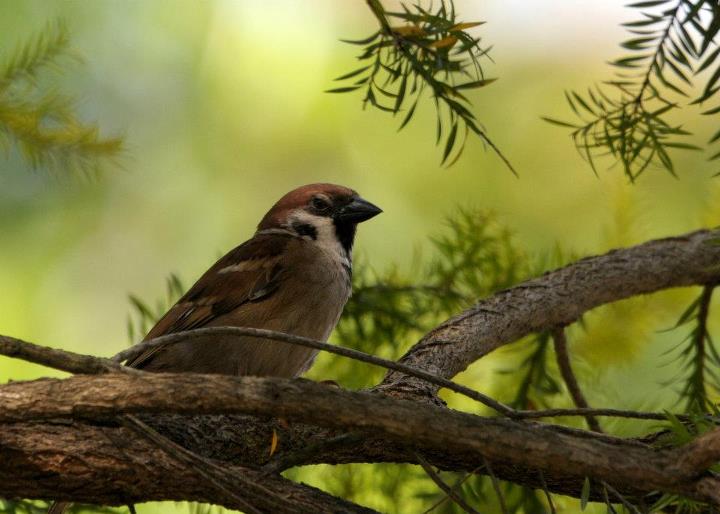



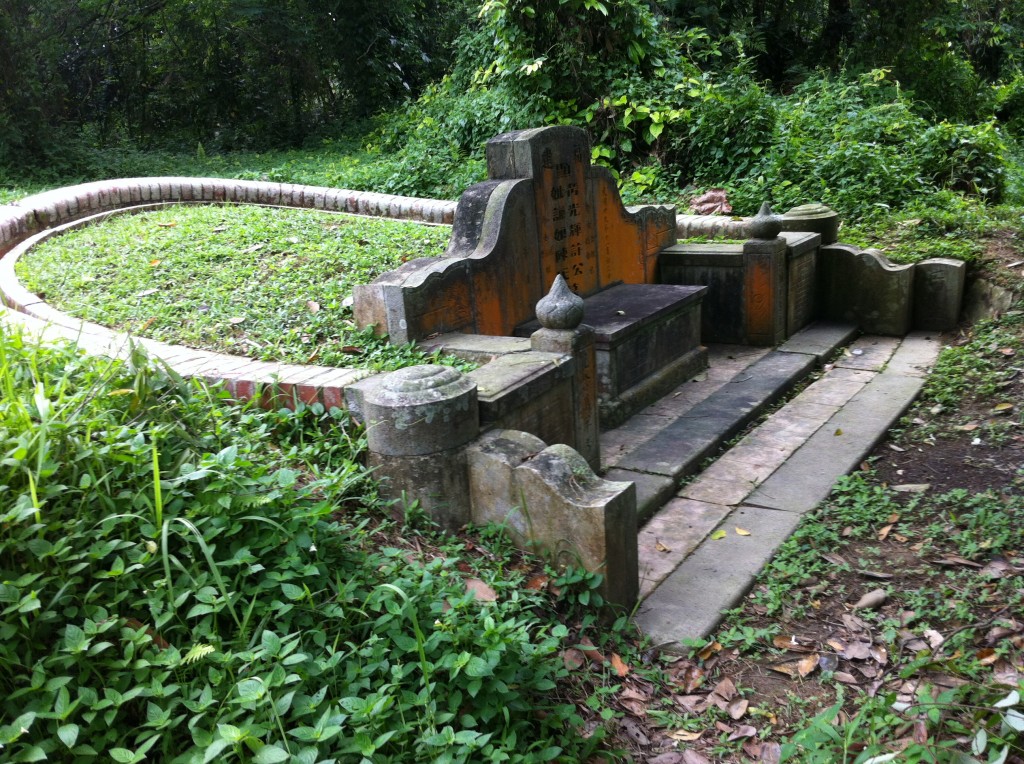
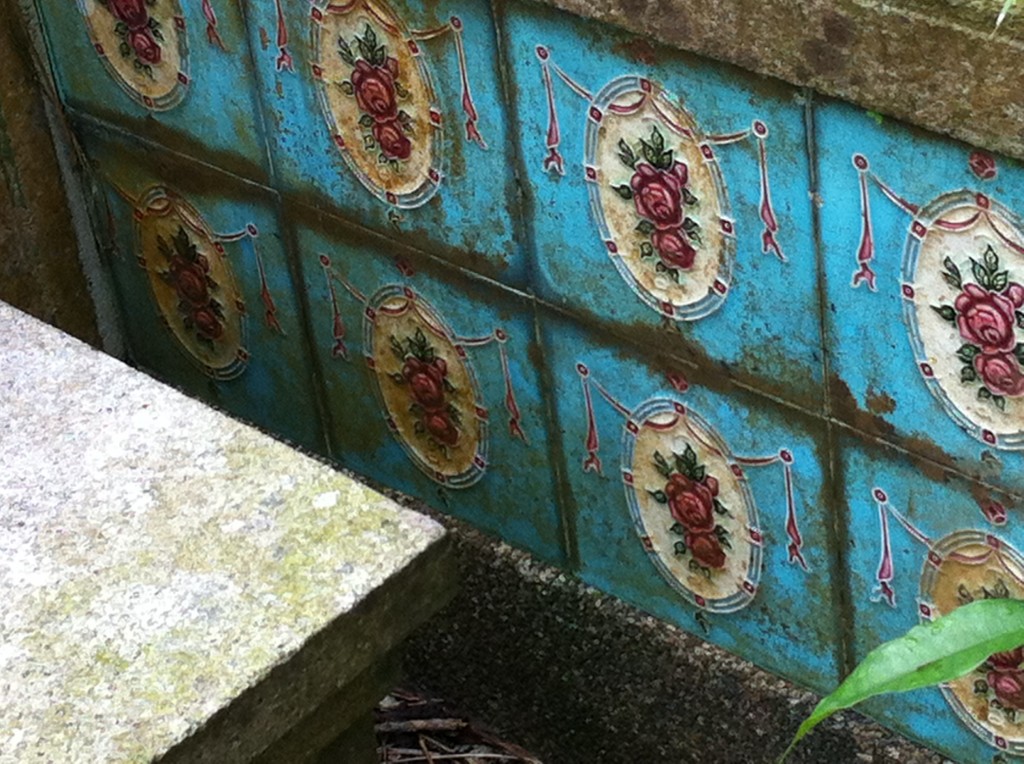

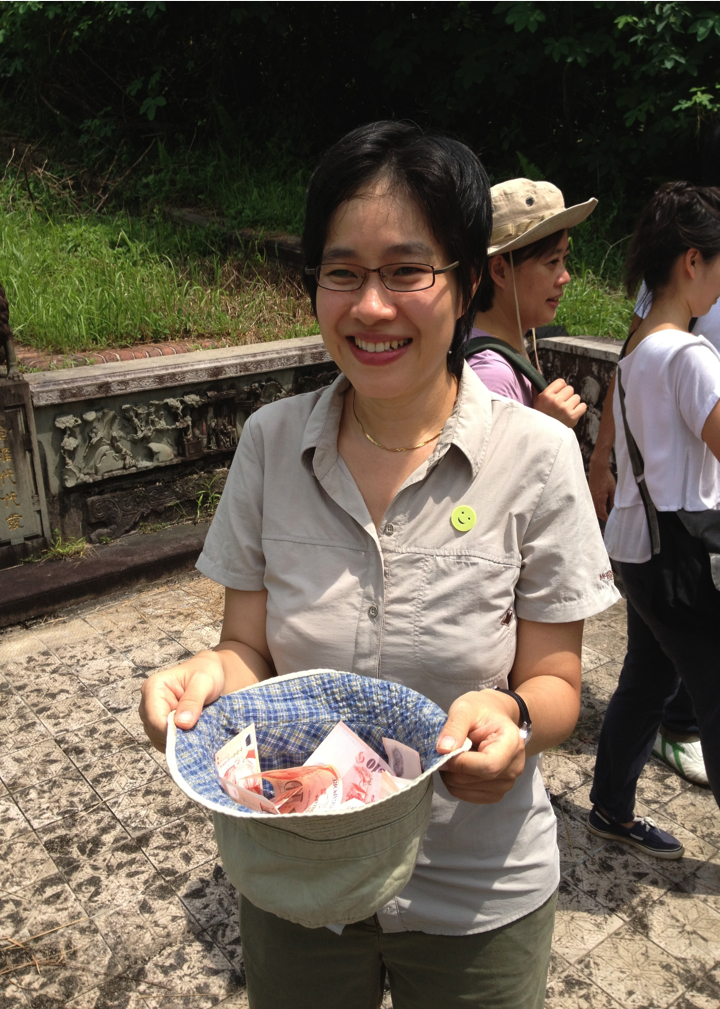




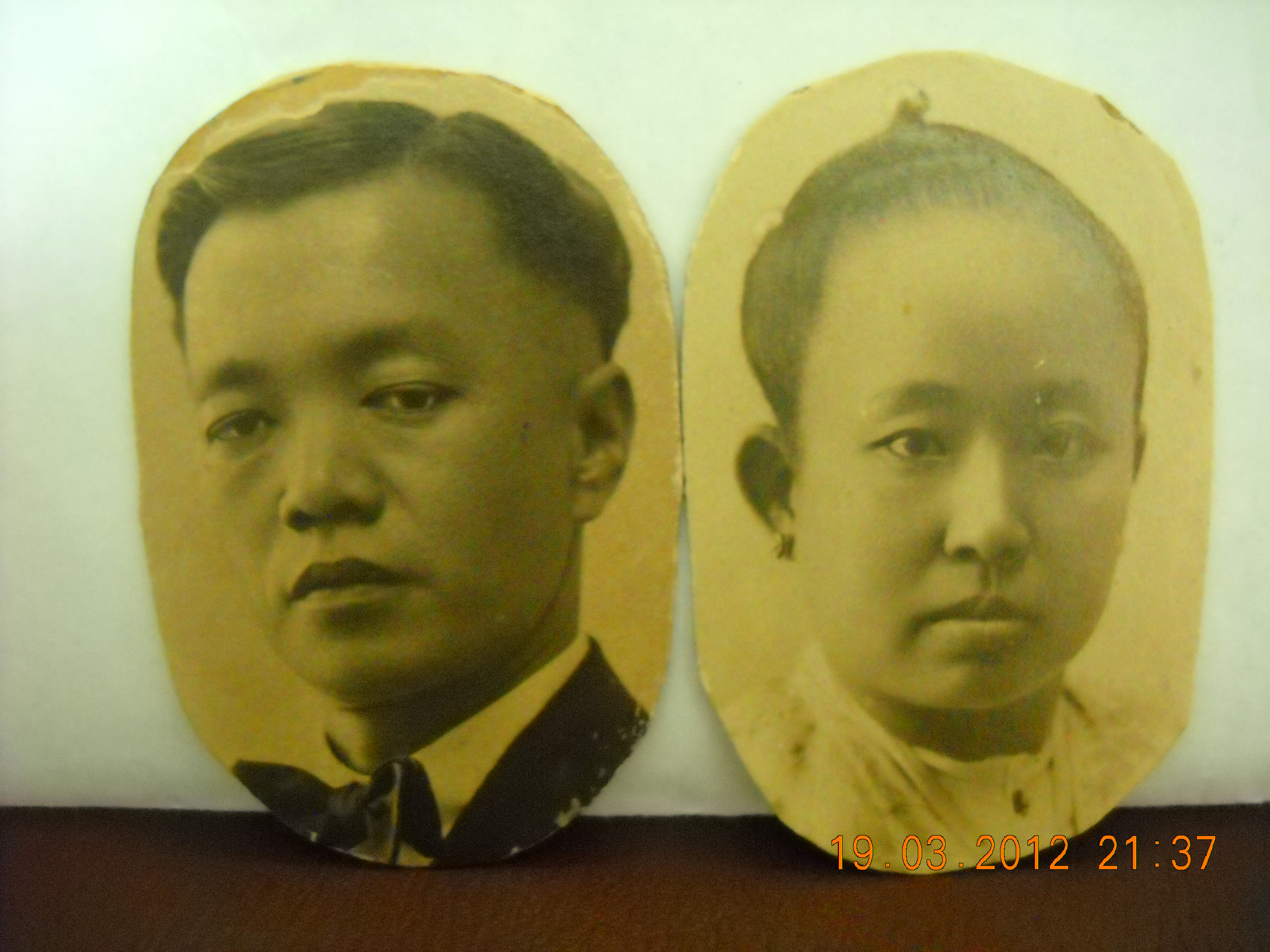
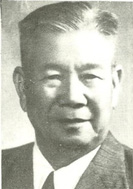
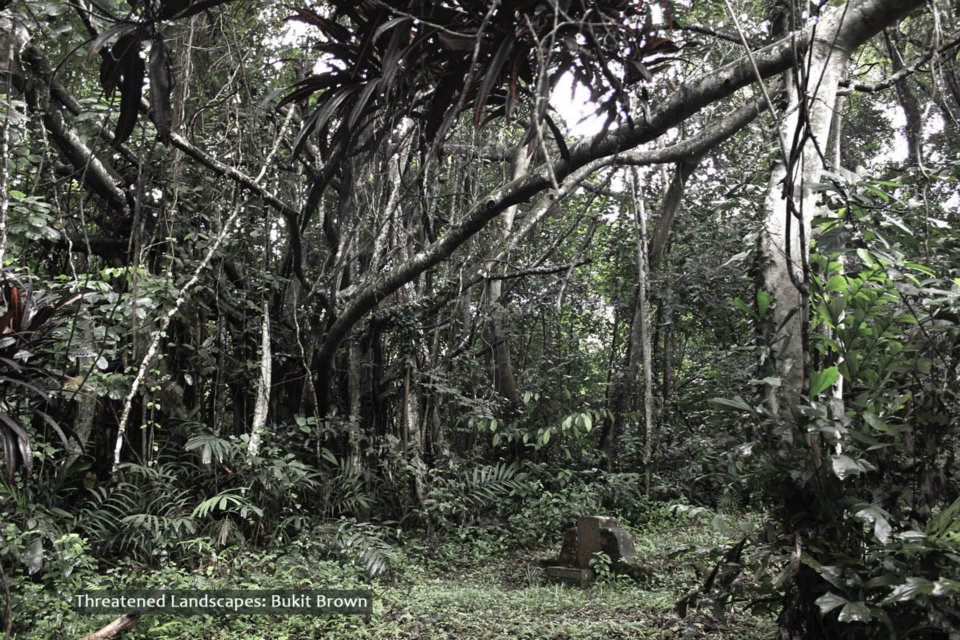
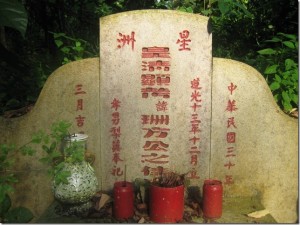
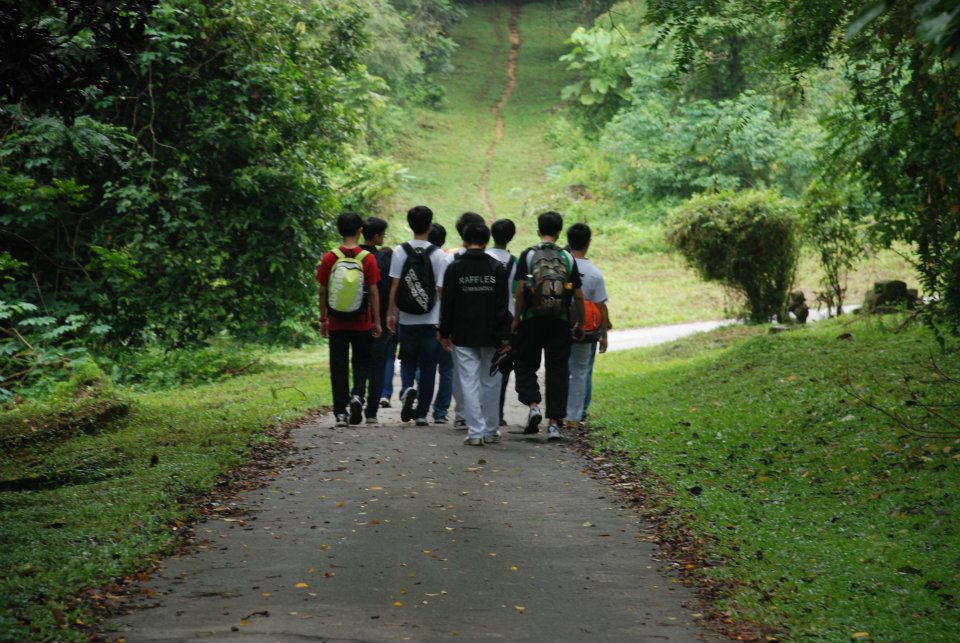

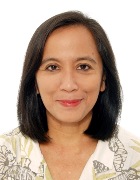


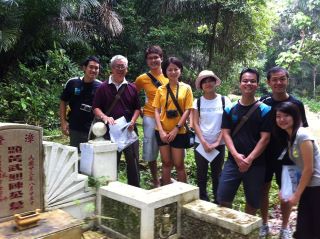
Recent Comments